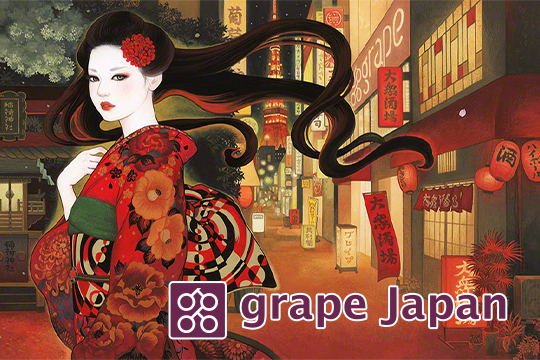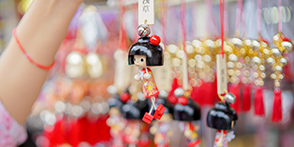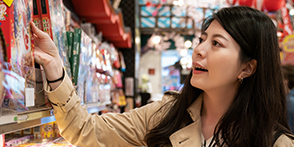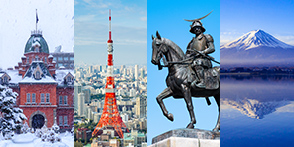-
地區
- 關東
- 東京
-
分類
- 流行趨勢
- 地區
- 日本文化
- 其他
-
更新日期
- 2021-05-13

Source: ElHeineken, CC BY 4.0, via Wikimedia Commons
Akihabara has changed a great deal in the last 25 years. Back in the early '90s, when Japanese electronics makers dominated the world and the bubble economy had yet to pop, every other store was selling consumer electronics and the billboards of Akihabara were crowded with advertisements for products made by Sony, Panasonic and Sharp.
Fast forward 30 years, and those household names are conspicuous by their absence. These days, Akihabara's billboards advertise world-famous gaming companies, anime series and manga characters. Consumer electronics stores are outnumbered by shops selling toys, gaming consoles and computer software. Any retail space left over goes to maid cafes and CBD-infused decaffeinated coffee retailers.
How did this happen? Why did the bottom fall out of electronics manufacturing in Japan? And how did Akihabara go from being a showcase for its electronics 'makers' to becoming capital of 'Cool Japan'?
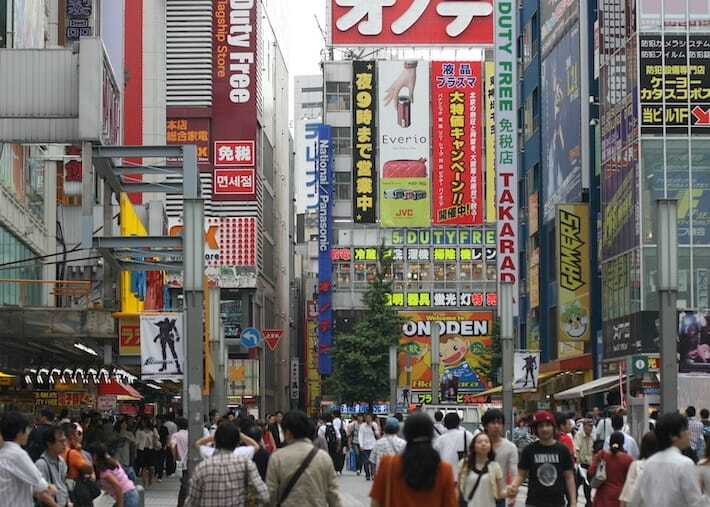
Shoppers on the streets of Akihabara are more likely to be buying games than stereo equipment. | Shiny Things, CC BY 2.0, via Wikimedia Commons
The very idea that Japanese brands would one day lose their domination of the global consumer electronics market would have been unthinkable in 1990. But the advent of the internet stole a march on Japan's household names.
All the same, Japanese companies were well placed to capitalise on the advent of the laptop computer and the smartphone. Some of them were producing mobile phones capable of surfing the internet a decade before the iPhone. The first company to attach a camera to a mobile phone was not Apple, but Sharp.
But Japanese manufacturers failed to market their innovations abroad or radically rethink their designs. As a result, Japan was eventually invaded by smartphones made by Apple (American) and Samsung (Korean). Japan was said to be suffering from the 'Galapagos syndrome.'
Starting in 2012, the electronics giants that once made Japanese proud – Sharp, Panasonic, Toshiba and Sony – were one by one downgraded to so-called 'junk' status by ratings agencies.
In their stead, American companies like Google, Twitter and Apple have become the household names of the internet age. South Korean companies like LG and Samsung dominate the market for consumer durables and electronics, churning out everything from flatscreen TVs to vacuum cleaners. These days, Samsung makes more profits than the top 15 Japanese electronics makers combined, and Sony’s market share is 1/30th of Apple’s.
For a time, Japanese commentators argued that this needn't matter. The name on the box might be that of a Korean or American company, but the hi-tech components in their products were still made by Japanese companies. The products themselves were no longer ‘Made in Japan’, but most of them had ‘Japan Inside.’
Unfortunately, that argument no longer holds water. While 70% of the components of an iPod were made by Japanese electronics makers in 2005, they made up just 20% of the components of an iPad in 2010.
In Whatever Happened to Japanese Electronics? A World Economy Perspective, Steven Vogel of UC Berkeley cites figures that show that Japanese manufacturers’ share of DRAM semiconductor production worldwide dropped from 76% in 1987 to just 3% in 2004. Their share of production of the liquid-crystal displays used in phones and TVs has taken an even more dramatic nosedive, going from 100% in 1995 to just 5% in 2005.
Witnessing such dramatic decline, commentators said that Japan was a country struggling to adapt to the demands of the 21st century. Its economy was too hierarchical to respond effectively; Japanese society had become closed-minded, its people too rigid and uncreative, they said.

A gashapon shop in Akihabara. Gashapon (ガシャポン) are toys sold in capsules from vending machines. The name comes from 'gasha', the sound the machine makes when you crank it, and 'pon', the sound of the toy landing in the collection tray. | Ubahnverleih, CC0, via Wikimedia Commons
...... read the original article on the grape Japan website:
https://grapee.jp/en/173482
